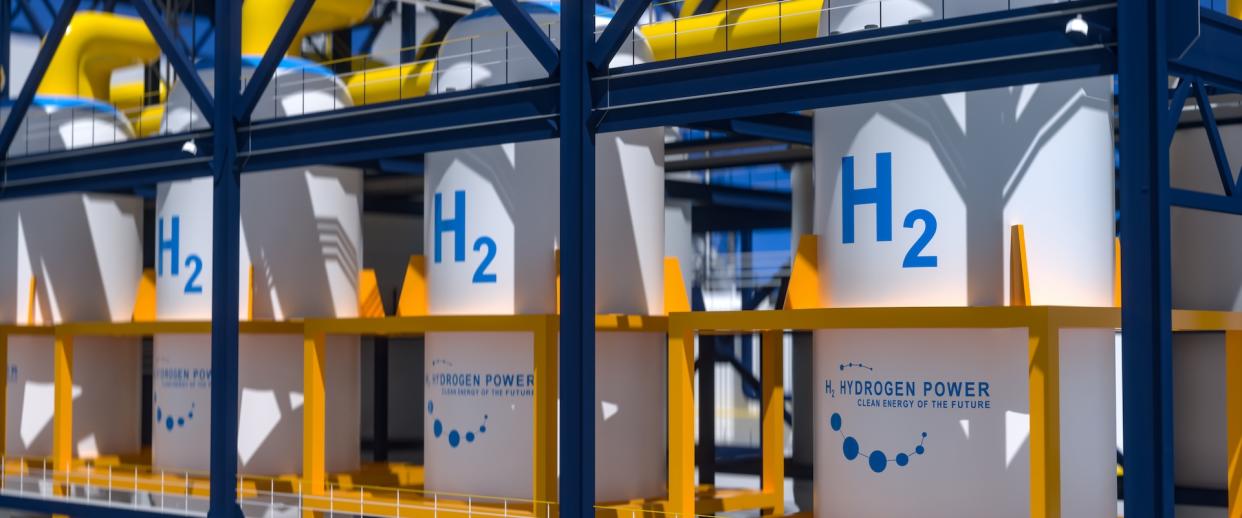State opens first-of-its-kind energy research and demonstration facility that could revolutionize hydrogen production: 'Well-positioned for growth and impact'

Hydrogen is going through an intense vetting process in Texas that is intended to prove the fuel source's worth as a cleaner way to power vehicles and as a stationary energy maker. It could also provide support for the electrical grid.
As a result, there's now a blueprint for a Lone Star State hydrogen economy.
It's thanks to a U.S. Department of Energy-backed program called H2@Scale in Texas and Beyond, which is headquartered at the University of Texas at Austin (UT). The project started in 2020 with $10.8 million.
Its numerous partners include Toyota, Shell, and Mitsubishi Heavy Industries. It is being led by sustainable energy outfit Frontier Energy, which has multiple locations across the country, all per a UT press release and a report from Renewable Energy World.
The goal during the initial three-year program was to show that hydrogen can be a cost-effective, planet-friendly fuel. A benchmark was noted in April with the opening of a research and development facility on campus.
"H2@Scale in Texas builds on nearly two decades of UT leadership in hydrogen research and development. With this facility, we aim to provide the educated workforce and the engineering data needed for success," Michael Lewis, a UT Austin Center for Electromechanics research scientist, said in a news release.
Watch now: Alex Honnold shows off his new Rivian
UT outlined two main ways that hydrogen is studied. A novel integration site for commercial hydrogen, housed at the university, makes, distributes, stores, and uses it. Hydrogen is created via the two most common methods: electrolysis, which can use renewable electricity to atomically split hydrogen off from water; and by using natural gas to create high heat to separate it from carbon in methane. The latter is most common in the U.S. and uses natural gas, per the Energy Information Administration.
UT claims this is the first time that multiple production methods were used on the same grounds simultaneously for multiple end uses. The hydrogen was planned to power a computer center and to provide fuel for a fleet of Toyota cars, a vision the recently opened center should fulfill.
Hydrogen infrastructure was being studied at the Port of Houston, as well. Policies, regulations, and the economics needed to deploy large-scale projects were looked at, all according to the project description.
The program's crowning achievement might be the game plan for a statewide hydrogen framework, which accounts for future demand, use, and delivery systems.
The fuel source isn't without detractors, as the Sierra Club has a lengthy page of hydrogen concerns. It cites various leaks, pollution, and other troubles. The page notes that hydrogen releases nitrogen oxide when combusted, which can irritate human airways. It supports only hydrogen made through electrolysis that is powered by renewable energy.
Hydrogen proponents argue that, if perfected, the fuel has the potential to offset, reduce, or even eliminate planet-warming air pollution. That's the allure for energy officials eager to curb a warming trend that could have disastrous results if continued.
Hydrogen vehicles are already operational. If the Texas project produces a reliable, clean system to make and deliver the fuel abundantly, it could transform our transportation system, resulting in cleaner air. As noted by The Washington Post, a fresher atmosphere improves our health by reducing heart and respiratory risks.
While a majority consensus on hydrogen remains elusive, the work in Texas could provide a pathway for the fossil fuel alternative.
"Beyond the current project, the hydrogen research facility is well-positioned for growth and impact in the emerging clean hydrogen industry," Lewis said.
Join our free newsletter for weekly updates on the coolest innovations improving our lives and saving our planet.

